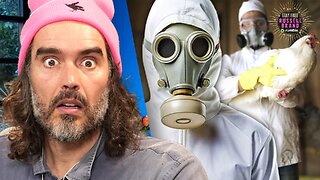Vet-approved homemade dog food recipes.
Vet-approved homemade dog food recipes.
With news of recalls and information about commercial dog food changing constantly, more and more dog owners are choosing to prepare their own dog food at home. Dogs love homemade food, but making homemade dog food is not the same as cooking a meal for yourself or your human family members. There are some important rules to follow to keep your dog healthy .
Homemade diets are growing in popularity partly because the ingredients can be controlled, so there is no fear of dog food recalls. Also, many people are trying to eat healthier and want the same for their dogs. Homemade diets are preferred by some because they contain whole food ingredients that are generally considered healthier than processed dog foods.
Homemade dog food is not suitable for everyone. There are a few factors to consider before switching your dog to a homemade diet.
Make sure you find a dog food recipe that is complete and balanced. One of the biggest mistakes you can make is feeding your dog an incomplete or unbalanced diet.
It takes time to measure the ingredients and prepare the food correctly. Make sure you have a schedule that allows enough time to make your dog's food regularly.
Make sure you can afford the ingredients to make your own dog food. Homemade food is usually cheaper than commercially prepared fresh or raw dog food, but usually costs a little more than pet food.
If you have a picky dog, you may need several recipes so that you can change the diet periodically and keep your dog interested.
Just like humans, dogs have nutritional needs that must be met in order for them to thrive. Dogs' nutritional needs differ from ours, so you can't start sharing your own dinner with your dog. Feeding an incomplete or unbalanced diet can lead to vitamin and nutrient deficiencies in dogs.
It depends on the dog's life stage and activity level.
Your veterinarian can help you determine how many calories your dog needs per day.
A homemade dog diet should contain a proper balance of protein, carbohydrates, fiber, and fats. Vitamins and minerals should be added to the food to ensure that it is complete and balanced.
IMPORTANT: Before making any changes to your dog's diet, consult your holistic veterinarian to ensure that the changes are compatible with your dog's current state of health. Weigh your dog before making dietary changes.
Ingredients:
230 grams of organic ground turkey thigh (boneless).
2 tablespoons organic ground turkey meat (liver, gizzard, heart).
¼ cup finely grated organic vegetables.
1 teaspoon raw sunflower seeds ground.
½ teaspoon organic coconut oil.
½ teaspoon salmon oil.
500 mg Calcium Citrate.
Adjust ingredient measurements based on your dog's weight and activity level. The amounts listed above are for a 9-pound dog that gets minimal exercise. A dog's caloric needs can quadruple with intense exercise. Be sure to monitor your dog's weight and adjust meal portions to meet caloric needs.
Blanch the vegetables and set aside. Gently cook the ground turkey thigh and organ meat over medium-low heat. Remove from the burner when most of the meat is white, but some remains pink. Place the blanched vegetables in a food processor or clean coffee grinder and pulse until finely grated. Mix all ingredients together and serve after making sure the mixture has cooled enough to eat.
Tips: The heat of the cooking process diminishes the life force (vitality) of food. Partial gentle cooking will retain more vitality of the food, while providing an easier meal for some pets to digest than raw food. Blanching and grating vegetables makes them easier to digest and improves nutrient absorption.
If your dog has a history of urinary tract infections, struvite, or calcium oxalate stones, ask your veterinarian for advice.
Monitor your dog's urinary pH because it is directly linked to and affected by his diet.You can buy pH strips at most pharmacies. The normal pH level for dogs is 6.5.
-
 43:38
43:38
Bright Insight
2 hours agoYou Won’t Believe This Disturbing Gobekli Tepe Update
19K63 -
 LIVE
LIVE
The Kevin Trudeau Show
1 hour agoThe Kevin Trudeau Show
151 watching -
 1:09:31
1:09:31
Russell Brand
4 hours agoBird Flu Pandemic SCAM?! New Lockdowns + Vaccines!
102K240 -
 2:56:24
2:56:24
The Charlie Kirk Show
3 hours ago2016 Redux + George Janko On-Set | Habba, Kassam, Janko | LIVE 6.10.24
72K14 -
 LIVE
LIVE
SilverFox
14 hours ago🔴LIVE - Elden Ring RANDOMIZER Mod - Part 2
464 watching -
 59:36
59:36
The Dan Bongino Show
6 hours agoOperation DUMP Joe Biden Has Begun (Ep. 2267) - 06/10/2024
419K981 -
 1:41:30
1:41:30
Steven Crowder
6 hours agoTrump Trial Turmoil as Juror’s Cousin F*cks Deep State | GUEST: Breanna Morello
287K437 -
 1:47:52
1:47:52
Mostly Sports With Mark Titus and Brandon Walker
17 hours agoMostly Sports With Mark Titus and Brandon Walker Presented by Jägermeister | EP 185 | 6.10.24
34.1K -
 1:29:01
1:29:01
Benny Johnson
4 hours agoPANIC: Biden Family ABANDONS Hunter As Gun Trial BLOWS-UP in Family's Face | VERDICT Imminent?! 🚨
86.3K81 -
 1:21:27
1:21:27
Graham Allen
7 hours agoTrump Case Going To MISTRIAL?! Or Possible Probation?
74K180